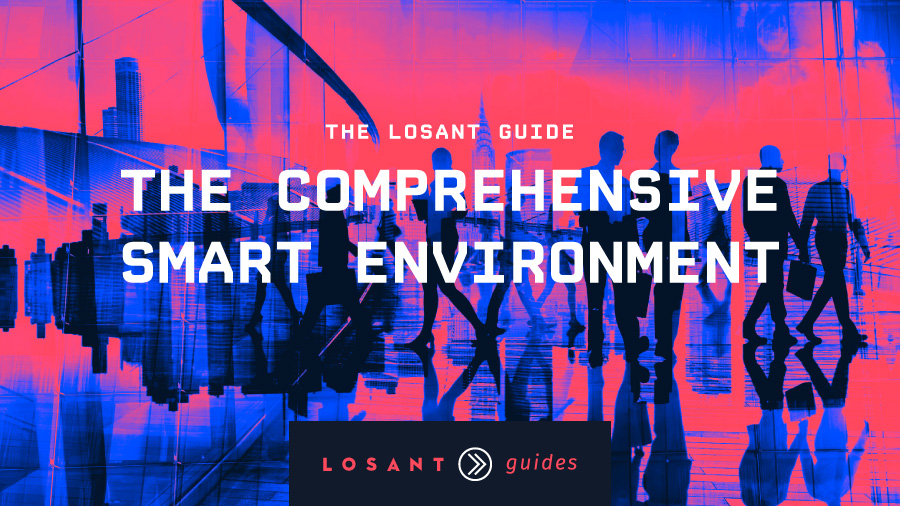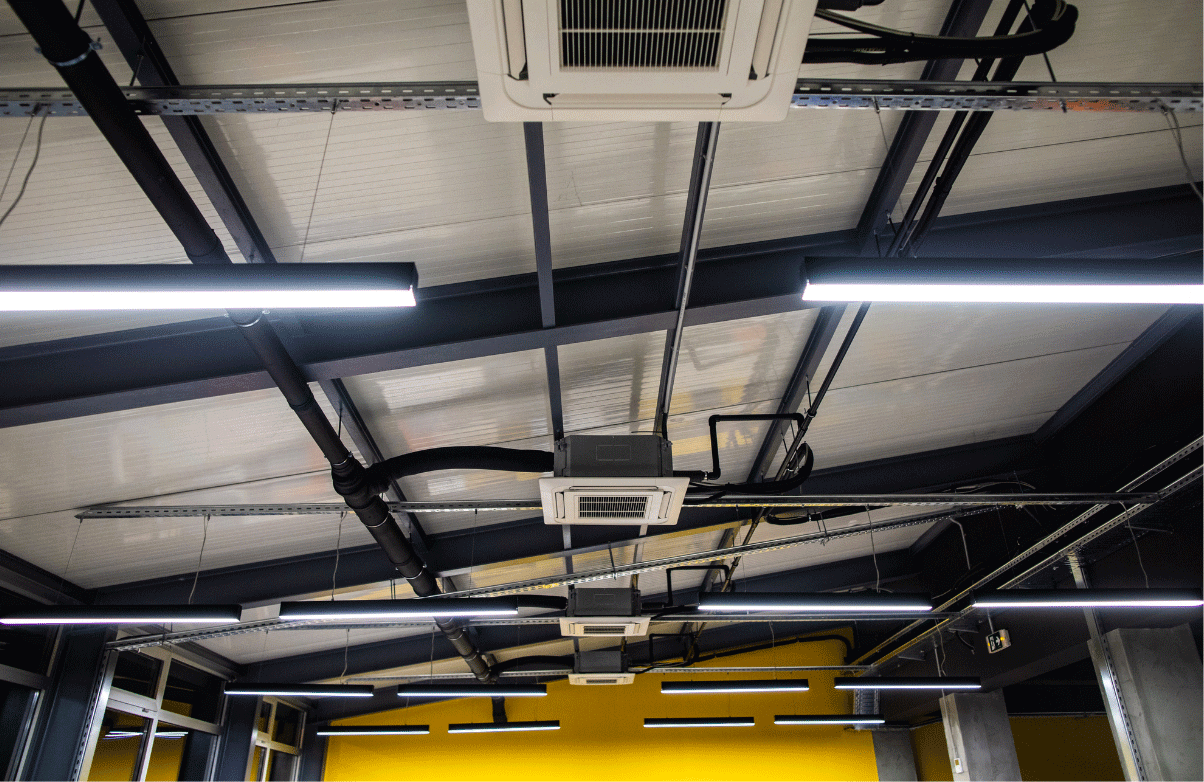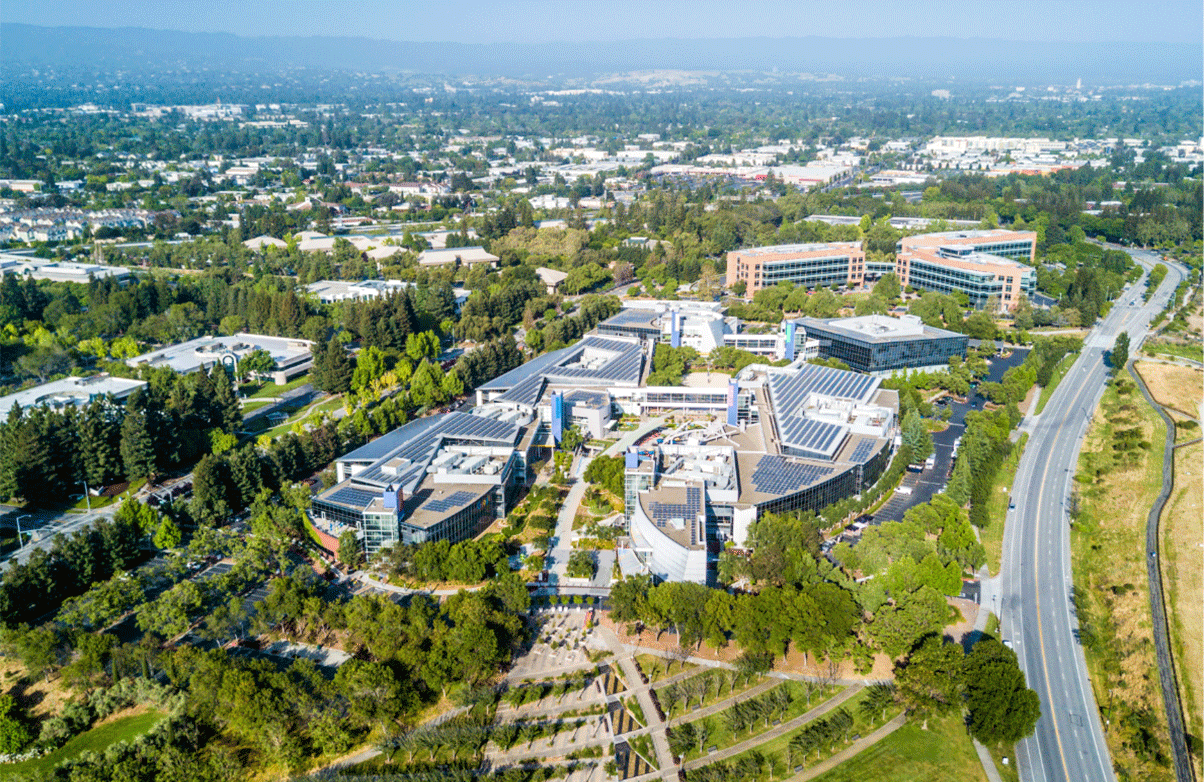While it may feel overwhelming to think of an onslaught of data streaming into a building automation system or existing database, the reality is that IoT platforms were created to appropriately collect, visualize, analyze, and store the data that you choose to receive from your environment. The Losant Enterprise IoT Platform is designed as an orchestration layer that facilitates seamless interactions between smart office systems and the people that will use them. Data from multiple systems are combined into a single-source API for all building systems that makes it simple to change or upgrade components in the future.
The Comprehensive
Smart Environment
Transforming your smart office, smart building, smart campus, or other kind of smart environment requires a strategy. Start here. Get ideas for smart environment IoT solutions. Learn how you can use an enterprise IoT platform to integrate existing building systems with new IoT data sources for an innovative, safe, and productive work environment.


What Will I Get?
- Help to determine which smart environment solutions are possible
- Knowledge about how an application enablement platform can simplify the smart environment
- A way to evaluate existing systems and tips on getting started
- Details about the benefits of an IoT proof of concept, or PoC
Learn about how you can transform your environment using insights from our experience with clients.
Look inside

the Guide
How Do I Get There
The way forward is not always so clear. In order to create a comprehensive smart environment, organizations must combine the strengths of existing assets including building management systems, IT properties, and security systems (cyber and physical) with new technology. It is our practice to help smart environment creators get a single view of assets, normalize the data, and create applications to best utilize the information.
Determine Which Smart Environment Solutions Are Possible
Understand How Internal and External Partners Work Together To Create a Smart Environment
Evaluate Existing Systems and Learn How To Get Started
Smart Environment Orchestration
Inside A Smart Office Solution
.png?width=1000&name=losant-SmartEnvironment-huddleroom-01-(1).png)
In The Losant Guide to the Comprehensive Smart Environment, you’ll see exactly how an IoT application could be realized for huddle rooms.
The Smart Environment Team
A smart environment is only limited by an organization’s imagination (or budget). Start with the opportunity that will delight your workforce or increase efficiency in a way that complements your organization’s business goals. With the right partners, a smart environment is well within reach.
Facilities
- Building
- Infrastructure
- Electrical
- See the complete list in the guide
IT
- Network tools
- Network security
- IT service management
- See the complete list in the guide
Security
- Guards
- Badges
- Physical security systems
- See the complete list in the guide
HR
- Innovation
- Employee experience
- Employee safety
- See the complete list in the guide
Envision A Comprehensive Smart Environment

Smart Office
In an office, an IoT solution could be as simple as providing a user interface to help associates identify available desks. Some offices may benefit from indoor tracking and indoor positioning of iPads on a dashboard. Or, it could be as thorough as enabling a coffee machine to create a latte according to an executive’s specifications upon his or her arrival.

Smart Facilities
On a building floor, an IoT solution could enable security teams to monitor visitor activity live on a map, or help facility teams sync motion sensor data with HVAC controls to automatically regulate temperatures in occupied and unoccupied spaces, storing data about resources that are not being used to eventually reduce costs.
Smart Warehouse
In a warehouse, an IoT solution could be as simple as monitoring inventory systems on a dashboard or using RFID to prevent loss and theft. Or, it could be as thorough as connecting inventory management data to purchasing systems to automatically replenish parts or items nearly out of stock.

Smart Campus
On a campus of several buildings a connected solution could help a leadership team mitigate security concerns with gunfire detection technology; monitor high-value or frequently-used equipment; measure and analyze food or water consumption and boost sustainability efforts.
Deploying The Smart Environment
There is no one standard method our team uses to deploy a smart environment. By now you’ve learned that a smart environment can take shape virtually anywhere. Despite the differences, there are a few common practices every organization should consider.
“Through a PoC we were able to show immediate value. We started small with one focused goal and have been able to expand that to solve multiple issues rather quickly.”
Adam Daniel
VP of Enterprise Solutions
Define the Short-Term and Long-Term Strategy
When creating a budget and timeline, it is important to note that a solution put in place to manage conference room space could be executed in months, but a solution created to provide additional security for a workspace could take far more time to implement. For instance, if custom hardware is required, a three-to six-month lead time is to be expected.
Create An IoT Proof of Concept
Once you have decided on a path forward, engage your internal team and external partners to design an IoT PoC that will help you test the technology. A low-risk proof of concept is the best way to introduce a solution to an organization. The purpose of a PoC is to experiment with a solution in your environment, collect data, and evaluate performance from a set timeline on a set budget.
Plan A Small-Scale Rollout
A pilot, or small scale rollout gives organizations the opportunity to identify any hiccups with hardware, iron out any kinks in the installation procedure, and receive feedback from users. Additionally, the pilot gives enterprises a chance to develop a process for other business units and solve problems before scaling up.




